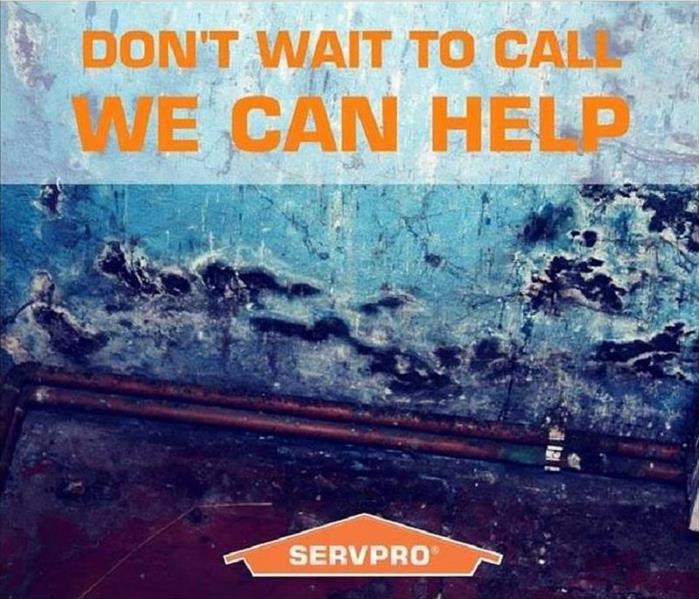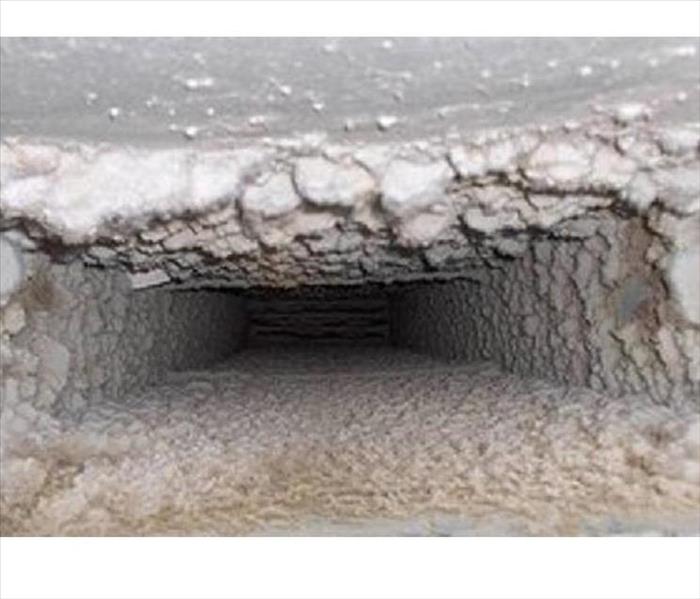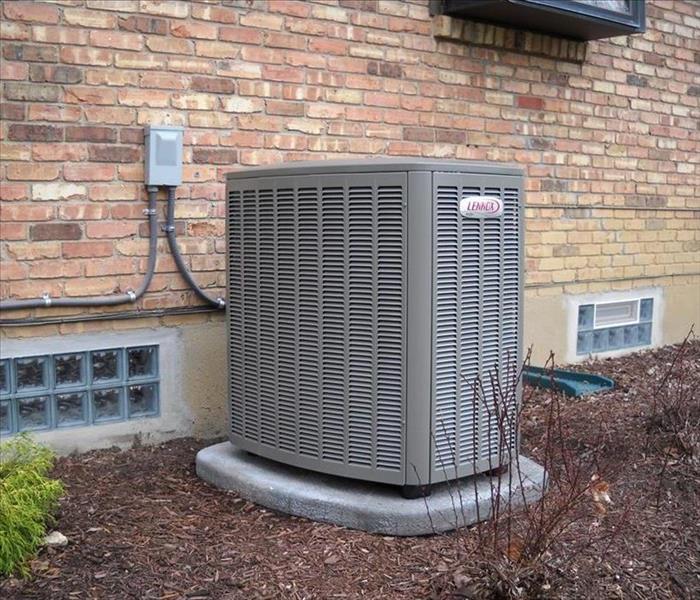A Building Owner can take steps to Prevent Mold
5/10/2017 (Permalink)
An intrusion of water into your building can result in mold growth. Water intrusions can result from storm damage, Plumbing or equipment failures, long-standing leaks and poor humidity control. When water intrusions are not addressed right away, the resulting damage can present increased risk of harmful mold growth.
If humidity and moisture levels in a water-damaged environment are not promptly returned to normal, mold spores may grow and multiply. Organic materials found inside a building, such as wood, paper, drywall and insulation, provide food sources for mold to flourish. Excessive mold growth can lead to indoor environmental conditions that pose a health threat.
SERVPRO of Walnut handles water damages every day and knows prompt action is required to prevent mold growth. Mold is more likely to spread when an environment has been subject to moisture for a long period of time. If your property has sustained recent water damage, it is vital to remove excess water and dry the structure promptly. If there is an ongoing moisture problem in the building, it is important to be alert for:
- The presence of visible mold.
- Strong musty odors which may indicate mold is present.
- Any evidence of past moisture problems that might have caused undetected mold growth.
- Excessive humidity.
To be able to control possible mold growth in your business, here are some tips:
- Repair leaky plumbing and leaks in the foundation of your building.
- Reduce moisture with increased surface temperatures or reduce humidity levels in the air. To increase surface temperatures, insulate or increase air circulation.
- Keep heating ventilation and air conditioning drip pans clean, flowing properly and unobstructed.
- Maintain indoor humidity below 50 percent.
- Perform regular inspections and maintenance on buildings and heating, air conditioning equipment.
If you see mold in your business Call The SERVPRO of Walnut Professionals!
Are Your Air Ducts Sanitary?
5/4/2017 (Permalink)
Did you know, your ventilation system is often the biggest culprit in poor indoor air quality? Inspecting the duct-work in your facility or home should be a high priority. In most cases, the HVAC system has been operating for some time without much attention. Dirty ducts can circulate odors, contaminants such as mold, and irritating dust throughout your building or home.
- A routine part of your local SERVPRO professional's service is inspecting the heating, ventilation and air conditioning unit. Keeping the HVAC and duct-work clean can potentially extend the life span of equipment by allowing it to operate at peak condition, which may help save you money. Duct cleaning may not always be necessary. SERVPRO Professional's will inspect your HVAC system and duct-work, along with making recommendations about the best way to address any indoor quality concerns. This inspection can help save you money and provide peace of mind on the health of your HVAC system and duct-work.
- In some circumstances, such as after fire, smoke or suspected mold growth, duct cleaning becomes an essential part of the cleanup process. In these cases, a SERVPRO franchise professional can often restore the HVAC system and duct-work to pre-damage condition.
- If you have a fuel burning furnace, stove or fireplace, the U.S Environmental Protection Agency (EPA) recommends they be inspected for proper functioning, and be serviced before each heating season to protect against carbon monoxide poisoning.
The SERVPRO Duct Cleaning System is proven and cost efficient. Unlike the majority of duct cleaning services, SERVPRO of Walnut uses portable ventilation and air duct cleaning system to examine duct-work and make a clean sweep, removing years of dust and grime.
- The process begins by using patented equipment including a roto-scraper, which automatically adapts to the duct's shape and diameter while traveling through the duct, removing debris and filth before vacuuming begins.
- Next, a powerful push-pull air delivery and collection system transfers the debris from the ducting to a 16-gallon container.
- Air is filtered through a HEPA filtration system, removing 99.97% of the particles in the air-stream. HEPA filters capture debris and keep the indoor environment clean.
- As an optional process, a sealant or coating product may be prayed to address odor or microbial concerns.
- Filters will either be cleaned or replaced to remove odor and dirt.
If you are in need of Air Duct cleaning contact SERVPRO of Walnut (909) 598-8400.
Do You Know How Your HVAC Works?
5/4/2017 (Permalink)
Everything should be used in Moderation, even if it's the hottest days of summer or in the dead of winter in California. Despite always relying on our HVAC for comfort, many don't understand how the system works. If you want to learn more about HVAC systems, Continue reading for some Fantastic information on HVAC's.
- How do different HVAC systems work?
- Gravity Systems: rely on the principle that cold air is heavier than hot air. Thus will be at the bottom while hot air rises, making it not possible to use gravity systems alongside air conditioning systems. They are usually placed in the basement. When you switch it on, warm air goes to the ceiling and heats your house, and when it cools it sinks and is reheated.
- Forced Air Systems: usually takes cold or hot air and pushes it through metal tubes using a blower. Hot air and cold air is forced through different channels subject to whether you are using the furnace or air conditioner. The major drawback of forced air systems is blowouts. With time, the systems undergo wear and tear which can cause the malfunction of the blowers.
- Radiant Systems: also have a similar drawback as the gravity system. As they cannot be used alongside air conditioning systems. Radiant heating systems are used to heat all parts of the house, but most commonly, they heat implements that distribute the heat around your home such as radiators.
2. HVAC Parts and How They Work
- The Air Conditioner: Handles cooling the air and is usually placed outside the building. It utilizes either a coolant liquid or electricity to lower the temperature of the air. When it is switched on, it sends cold air inside and hot air outside.
- The Thermostat: Controls the system and usually turns the systems on or off and controls the temperature. It also operates specialized features that are installed in some heating and cooling systems.
- The Duct-Work: Consists of channels that enable the transition of cold and hot air in the home. It is fixed in the interior of the building.
- The Furnace: Uses various heat sources such as oil or natural gas to heat the air. There is a heat exchanger inside the furnace which maintains the air at the required temperature. Usually, the heater is placed in the basement, attic or inside a specially designed cabinet.
Now with this following information, make sure to keep your HVAC system in great condition! You can schedule a cleaning now with SERVPRO of Walnut (909) 598-8400.






 24/7 Emergency Service
24/7 Emergency Service


